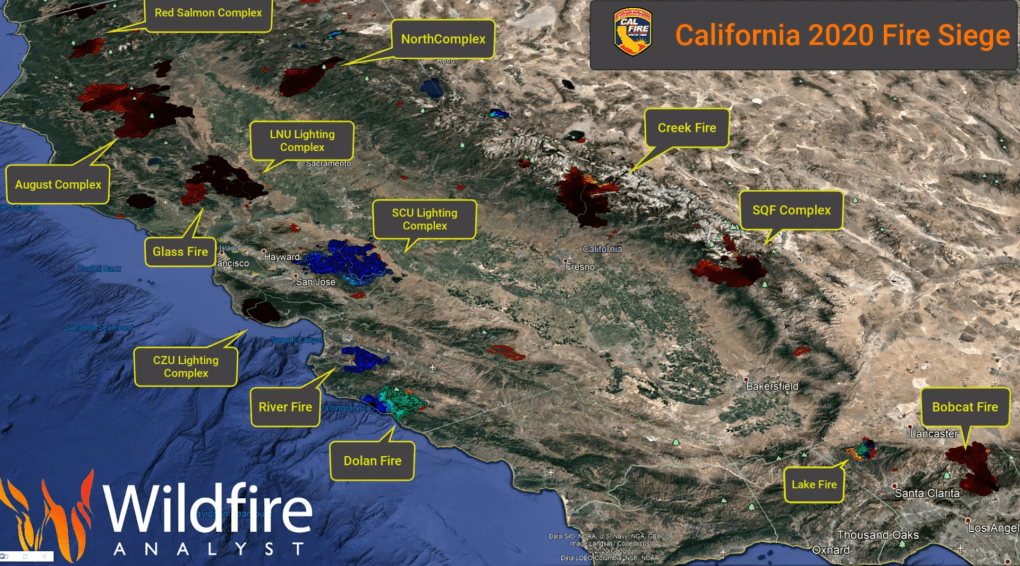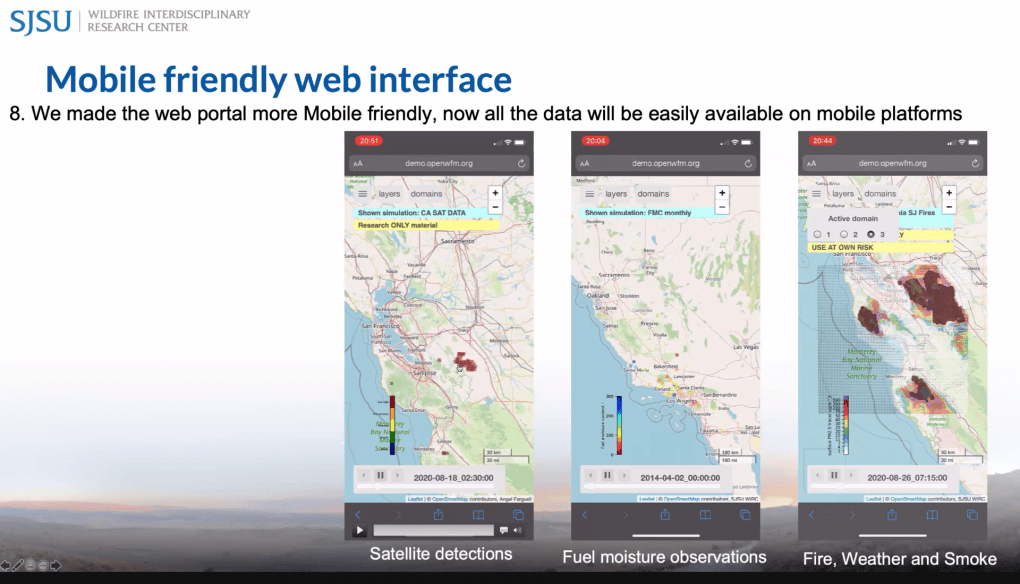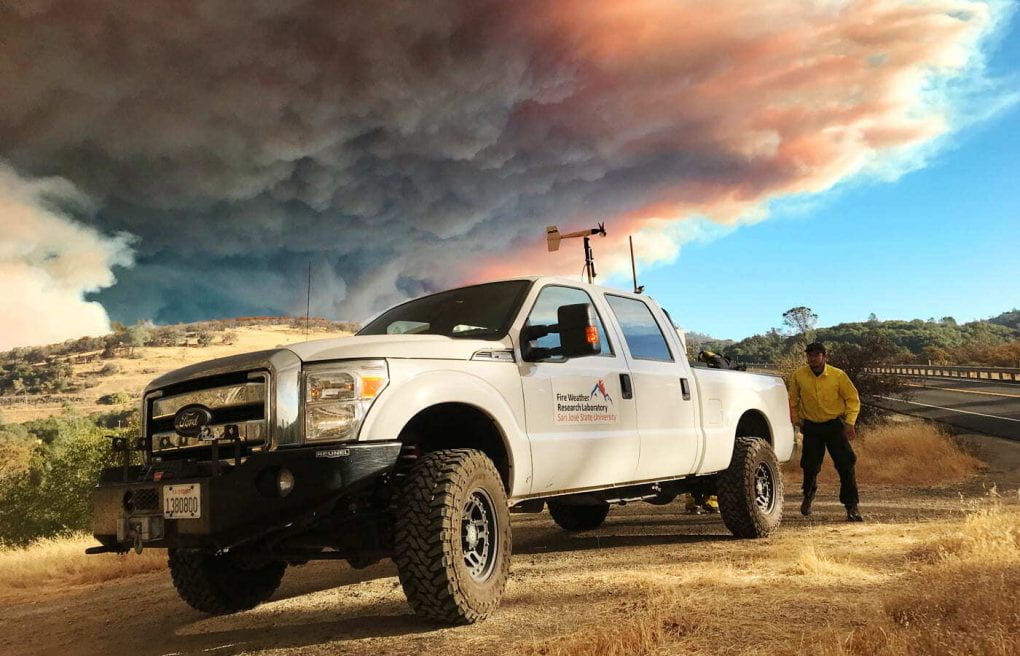California braces for yet another menacing fire season
Twice a month, San José State researchers collect samples from local vegetation, or “fuels”—and what they found for April was foreboding: Craig Clements, director of the SJSU Wildfire Interdisciplinary Research Center, told KPIX 5 News last week.
“This is the time of year when the fuels should have the most moisture content of the season, and they’re actually the lowest we’ve ever measured for April,” he said in the news report.
But there’s hope: Fire prediction and tracking tools are advancing—a key takeaway from SJSU’s Fire Weather Research Workshop held April 8-9—and the university is leading the effort in providing fire management agencies with state-of-the-art resources to help curb the spread of wildfires.
The virtual event drew hundreds of researchers, students and fire management stakeholders from 20 countries to discuss the latest research and technology on fighting wildfires.
On the same day, California Gov. Gavin Newson announced a $536 million plan to prepare the state for the upcoming fire season. The California Legislature passed the package on April 12, and Newsom signed it April 13.
Intel from above the flames
Once a windstorm and an ignition come together, there’s little to be done.
“There’s nothing you can do to stop that fire,” explained Clements.
The best shot is to try to contain the fire with an “initial attack,” he continued. “That’s where remote sensing technology comes in, because the sooner you can detect the fire, the faster you can get into it.”
WRF-SFIRE is a forecast and modeling system—and a crucial resource to help curb the spread of wildfires—that relies on remote sensing technology. Developed and operated by SJSU, the system pairs data from satellite and infrared imaging with a simulation tool, and it combines a weather forecast model (Weather Research Forecast) with a fire-spread model (SFIRE).
During the workshop, faculty shared updates on WRF-SFIRE, including the addition of wildfire smoke dispersion forecasts, improved data input and analysis, more options for running simulations, and even a mobile-friendly interface.

Adam Kochanski, assistant professor of wildfire modeling, shared how WRF-SFIRE now can model smoke behavior based on fire-spread predictions.
But while tracking and prediction technology is advancing, not enough satellite and infrared imaging data is being gathered in day-to-day fire management operations, noted Miguel Valero Peréz, assistant professor of wildfire behavior and remote sensing at SJSU. He said that bringing that process up to speed is crucial and requires widespread collaboration.
“We need to collaborate with everyone—fire management agencies, academia, industry. We can only solve this problem if we work together,” Valero Peréz emphasized.
Solving a bigger problem
Newsom’s package may be able to help the state get ahead of the game as another dangerous fire season approaches. His plan provides funding to invest in workforce training, vegetation and terrain management, home protection and more.
But the effort to track conditions needs to be year-round, Clements told NBC Bay Area News.
“We need to be doing predictions for the conditions that would lead up to a severe fire season, so using the state-of-the-science modeling we have at San José State and running that operationally throughout the whole season versus a fire here and a fire there like we usually do,” he explained on the news report.
Joaquin Ramirez is principal consultant with Technosylva, Inc., a wildfire technology company that partners with SJSU by using WRF-SFIRE to assist management agencies like Cal Fire during fire season. In 2020, they offered Cal Fire support with more than 9,000 fires.

Joaquin Ramirez of Technosylva, Inc., a wildfire technology company, provided a look back at 2020 fires in California.
He said the workshop is proof of the exciting research and technology in progress, but that there’s still much to do when it comes to solving the wider problem.
“An all-hands job is needed, starting from supporting citizens that understand that we have to live with fire in a smarter way—and that we need to support scientists as much as we support our firefighters.”
A community service
Clements said that while the workshop is about exchanging research and ideas, it’s also about providing information directly to those fighting fires on the front lines.
Because it’s free and several topics are covered in a shorter amount of time, it can be a good alternative to a conference, which might not always be an option for fire management agency employees.
“It’s part of our service to the community to host this workshop and to have it to be free to anyone,” he explained. “It’s about accessibility to the knowledge.”

WRF-SFIRE is now accessible on mobile devices, a new addition to the system by wildfire researchers at SJSU.
Martin Kurtovich, senior utilities engineer for California Public Utilities Commission (CPUC), said their staff participated to engage on important fire science topics—particularly wildfire modeling and predictions for forecasting future fire conditions.
He added, “I appreciate the important work being done at SJSU in not only conducting important research on California wildfires but also training future leaders in wildfire management.”
Learn more about SJSU’s Wildfire Interdisciplinary Research Center here.

